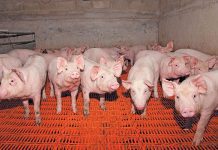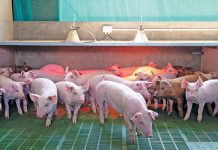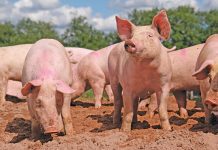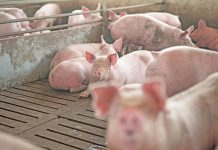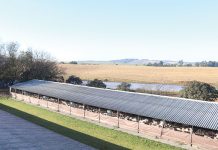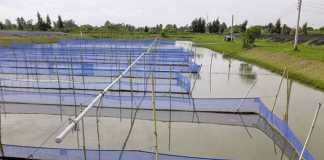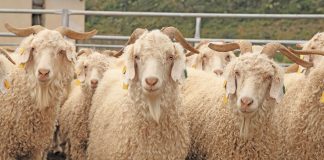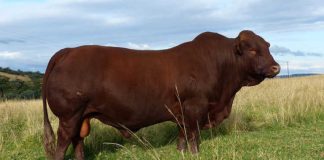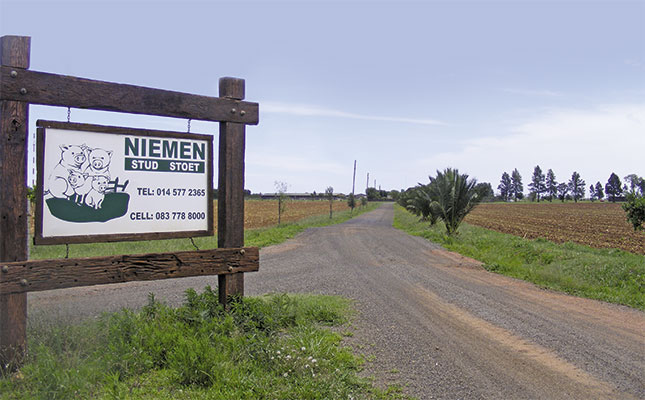
Photo: Annelie Coleman
Neil Dry, owner of the Niemen Pig Stud near Magaliesburg in North West, says optimal production is vital for economic survival in pork production.
“Farmers, being price-takers, not price-makers, must plan accordingly. Maximum production at the lowest possible input cost is the key to cost-effective pork production.”
Neil says profitabily also depends on quality and volume. He therefore strives to supply commercial pork producers with the best possible breeding material. Towards this end, he keeps to a strict selection strategy based on performance testing, which sees him retaining only about 30% to 35% of the pigs for breeding. Culls are marketed for slaughter.
Three breeds
The Niemen Stud herd contains the Duroc, Large White and SA Landrace breeds. For the commercial market, Neil breeds F1 sows from two of these breeds. The F1 sow is then crossed with pure-bred boars from the third breed.
READ: Getting started with pigs
“I cross Landrace and Large White to produce F1 sows for commercial piggeries, and advise my clients to cross the F1 sows with a Duroc boar,” he explains.
“The heterosis achieved by cross-breeding improves pork production, but hybrid vigour can be diluted by continuously re-breeding with cross-bred animals.
“I source genetics locally and internationally. However, imported semen does not automatically indicate good genetics. It still has to be carefully evaluated.”
He stresses that each breed contributes specific characteristics to the pigs bred for commercial pork production.
The Duroc is a large-framed red breed of medium length, very muscular with good temperament, known for its exceptional carcass quality, above-average feed conversion and daily gains. The large-framed Large White also features top carcass quality as well as good growth, excellent feed conversion, fertility and good milk production. This hardy breed can withstand a wide range of climatic conditions.

Neil Dry, proprietor of the Niemen Stud, provides top genetics to commercial pork production enterprises.
The Landrace is known for good maternal ability, fertility and milk production. It is an early maturing, fast-growing breed with exceptionally high weaner weights.
“The ultimate slaughter pig bred from the F1 sow will show the characteristics of all three breeds,” Neil explains.
“The progeny of a maternal line consisting of three or four breeds coupled with a parental line from a number of other breeds will show tremendous variation.”
The Niemen breeding strategy ensures a slaughter pig with 50% Duroc, 25% Large White and 25% Landrace genetics.
Top genetics not negotiable
A stud breeder has a responsibility to provide the best possible genetics to the commercial market, says Neil. To ensure this, he and several other breeders have formed a company called Alliance Genetics South Africa. This company will collaborate with Alliance Genetics Canada (the largest pure-bred pig genetic nucleus in Canada), and other international partners, to provide quality genetics to the pork industry in southern Africa.
READ: Balancing pig production & animal welfare
“The genetic variation in our shareholders’ herds has been combined in a gene pool of 2 155 breeding animals; 1 600 Large White, 335 Landrace and 220 Duroc sows. Our AI station will initially accommodate 100 boars.”
Neil explains that their connection to Alliance Genetics Canada has given the company access to a gene pool of 8 500 sows and 600 boars. Alliance Genetics South Africa plans to be fully operational by the end of 2013 with an AI station situated near Polokwane.
Performance
Performance testing, critical to the stud, makes for top quality breeding stock.
“It is the only way for stud breeders to determine whether the animals comply with selection criteria. We can’t work on assumptions,” says Neil. “To measure is to know, especially in pig farming. It is highly unlikely that more than 50% of a litter of piglets will comply with a stud’s breeding criteria, although visually they may do so. Successful selection depends on performance testing data. BLUP is an invaluable tool in our industry.”
The Niemen stud’s Phase D data is managed by SA Studbook, an organisation Neil hails as a world leader in animal improvement. Data processed by SA Studbook is expressed as BLUP values.
On a cautionary note, Neil says that selection criteria should still be sufficiently flexible to meet market demands. For example, if the market wants fatter baconers, a breeder should concentrate on increasing back fat deposit. If more pigs are called for, the NBA (numbers born alive) BLUP value becomes more important.
READ: Pioneering in pigs
Neil feels that genomics will play an important role in the future, but says the exorbitant cost of genotyping is currently a prohibitive factor.
“Genotyping is the process of determining differences in the genetic make-up (genotype) of an animal. Genotyping can identify a specific genome in an animal early on, enabling appropriate selection for criteria such as milk production, carcass quality and fertility.”

Neil established the stud in 2004 with six sows and one boar. The operation has grown to one of the largest pig studs in the country.
Good outlook
Neil is positive about the future of pork production in South Africa where the current annual per capita consumption of pork is about 3,5kg compared to the European annual per capita pork consumption of between 75kg to 80kg.
“South Africa imports 34 000t of pork (65% ribs) annually. Subsidised pork imports, mainly from Germany, Canada, Spain and France, harm the local industry and make it increasingly difficult for farmers to compete.”
The considerable investment needed to start a piggery, coupled with high production costs, makes it difficult for prospective pork producers to enter the industry, says Neil.
“On a positive note, pork is no longer perceived as fatty, unhealthy meat and consumers increasingly realise the nutritional value of lean pork products.”
Phone Neil Dry on 083 778 8000, or email him at [email protected]. For more information, visit www.niemanstud.co.za.
This article was originally published in the 01 February 2013 issue of Farmer’s Weekly.


